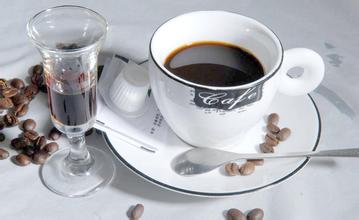Introduction to the sweet and fragrant Bolivian coffee flavor manor boutique coffee beans
The legal capital, the seat of the Supreme Court, with a population of 284000, 2790 meters above sea level. Founded in 1538, the city was formerly known as Chuquisaka. In 1809, the first uprising against Spanish rule broke out in South America. Bolivia declared its independence here in 1825 and became the capital in 1826. In 1839, it was renamed Sucre in honor of the second president of Bolivia, General Antonio Jos é Sucre. In 1898, the central government, presidential palace and parliamentary hall were moved to Russ, and the Supreme Court stayed in Sucre. Sucre has been listed by the United Nations Educational, Scientific and Cultural Organization (UNESCO). Most of the east and northeast are Amazon alluvial plains, accounting for about 60% of the country's area; the central part is a valley area, belonging to the eastern foothills of the Andes, with well-developed agriculture and many important cities concentrated here. The west is the Bolivian plateau, with an average elevation of more than 1000 meters in the landlocked countries of the Bolivian system, with only 14197 square kilometers of water and 24201 square kilometers of ponds, and relatively poor fishery resources, producing only freshwater fish. there are mainly: River trout, silver Han fish and other Bolivian flags were used on October 31, 1851, the national flag is rectangular, the ratio of length to width is 3:2. From top to bottom, the flag is composed of three parallel rectangles of red, yellow and green, with the national emblem painted in the middle. It turns out that red symbolizes sacrifice for the country, yellow symbolizes hope, and green symbolizes sacred land. Now it is divided.
Don't represent animals, minerals and plants. The national flag with the national emblem is used for formal occasions, and the national flag without the national emblem is used for general occasions.
The President is the head of State and Government and the commander-in-chief of the armed forces. He is directly elected and cannot be re-elected. Parliament is the legislative body of the country. The Cabinet is the executive branch of the government, directly under the leadership of the President. Restore the establishment of a vice president; change the election of provincial mayors to direct elections; guarantee personal security, belief, association, freedom of labour, thought and education, and the State is responsible for respect for human rights
The early Bolivian coffee was of low quality and the market was very poor. Usually the picked coffee fruit is bumped all the way to the processing plant after a simple peeling treatment. Due to the imperfect infrastructure, the traffic is underdeveloped. Coffee farmers have to overcome the rugged mountain road and transport the beans to the higher altitude area of La Paz for washing. If the coffee fruit is not delivered to the processing plant in time, it is easy to ferment and rot on the wet mountain road. As a result, the coffee of good quality has been destroyed.
Bolivia has made a lot of efforts to improve the quality of coffee, stimulate the enthusiasm of coffee farmers and make coffee farmers have a deeper understanding of fine coffee. After the introduction of the COE competition, in the first COE competition held in 2004, there were 13 boutique bean cups with a total score of more than 84 points, and the champion bean score was as high as 90.44 points. In addition, in order to solve the problem of untimely post-processing, a washing treatment plant has also been built in Yanggas area. Let the freshly picked coffee be post-processed as soon as possible to prevent the decline in quality caused by transportation. Coffee farmers are also constantly refining their planting techniques. In short, Bolivia has finally achieved a magnificent turn in quality through its own efforts in all aspects. The advantage of Bolivian coffee lies in its high altitude and excellent varieties of coffee. Here the traditional Tibica and a small amount of Kaddura are highly valued in the world market.
Bolivia is not a big coffee producer, but the excellent altitude and climatic conditions of the La Paz Mountains make the coffee produced here is of excellent quality. Bolivian boutique coffee is delicate, bright, sweet and fragrant. It is a typical coffee that makes people feel clean and relaxed. The coffee here has subtle fruity aromas such as pears, apples, apricots, oranges and lemons. Malt and chocolate and nutty flavors are pleasing on the palate. In the past, most Bolivian coffee was of mediocre quality, but in recent years, the production of boutique coffee has developed rapidly and there have been a lot of pretty good beans. In recent years, the COE (Cup of excellence) system, which was first implemented in Brazil, has gradually become popular. Bolivia has also introduced this system, which, on the one hand, can stimulate the enthusiasm of coffee farmers, on the other hand, it is also to improve the quality of coffee. COE beans are better than ordinary coffee in both raw and roasted coffee.
The aroma of Bolivian coffee is rich and unique, both the aroma of ground beans and the aroma of coffee are obviously rich, similar to the mixture of flower and fruit aroma, which is impressive.

Important Notice :
前街咖啡 FrontStreet Coffee has moved to new addredd:
FrontStreet Coffee Address: 315,Donghua East Road,GuangZhou
Tel:020 38364473
- Prev

Introduction to the flavor and taste characteristics of Panamanian rose coffee with nutty aroma
In May 1989, in the Panamanian general election, both the ruling party and the opposition party claimed victory, so the election result was invalid. With the good offices of the Organization of American States, Rodriguez became interim president on August 31. Noriega, who opposes the US occupation, was appointed head of government on December 15. On the 20th, US troops invaded Panama. On the 21st, Ndalla, the former opposition presidential candidate sheltered by the United States, was sworn in at the US military base.
- Next

Introduction to the Kenyan Jinchu Coffee Flavor Manor with a sweet aftertaste of green tea
Kenya is divided into seven provinces (PROVINCE) and one provincial special district (Nairobi province). The following provinces are divided into districts (DISTRICT), townships (DIVISION) and villages (LOCATION). Under the new constitution, the four-tier administrative structure will be changed to the central and county (COUNTY) levels. The 47 counties established under the new constitution will be officially operational after the 2013 general election, with a total population of 41.8 million.
Related
- Detailed explanation of Jadeite planting Land in Panamanian Jadeite Manor introduction to the grading system of Jadeite competitive bidding, Red bid, Green bid and Rose Summer
- Story of Coffee planting in Brenka region of Costa Rica Stonehenge Manor anaerobic heavy honey treatment of flavor mouth
- What's on the barrel of Blue Mountain Coffee beans?
- Can American coffee also pull flowers? How to use hot American style to pull out a good-looking pattern?
- Can you make a cold extract with coffee beans? What is the right proportion for cold-extracted coffee formula?
- Indonesian PWN Gold Mandrine Coffee Origin Features Flavor How to Chong? Mandolin coffee is American.
- A brief introduction to the flavor characteristics of Brazilian yellow bourbon coffee beans
- What is the effect of different water quality on the flavor of cold-extracted coffee? What kind of water is best for brewing coffee?
- Why do you think of Rose Summer whenever you mention Panamanian coffee?
- Introduction to the characteristics of authentic blue mountain coffee bean producing areas? What is the CIB Coffee Authority in Jamaica?

